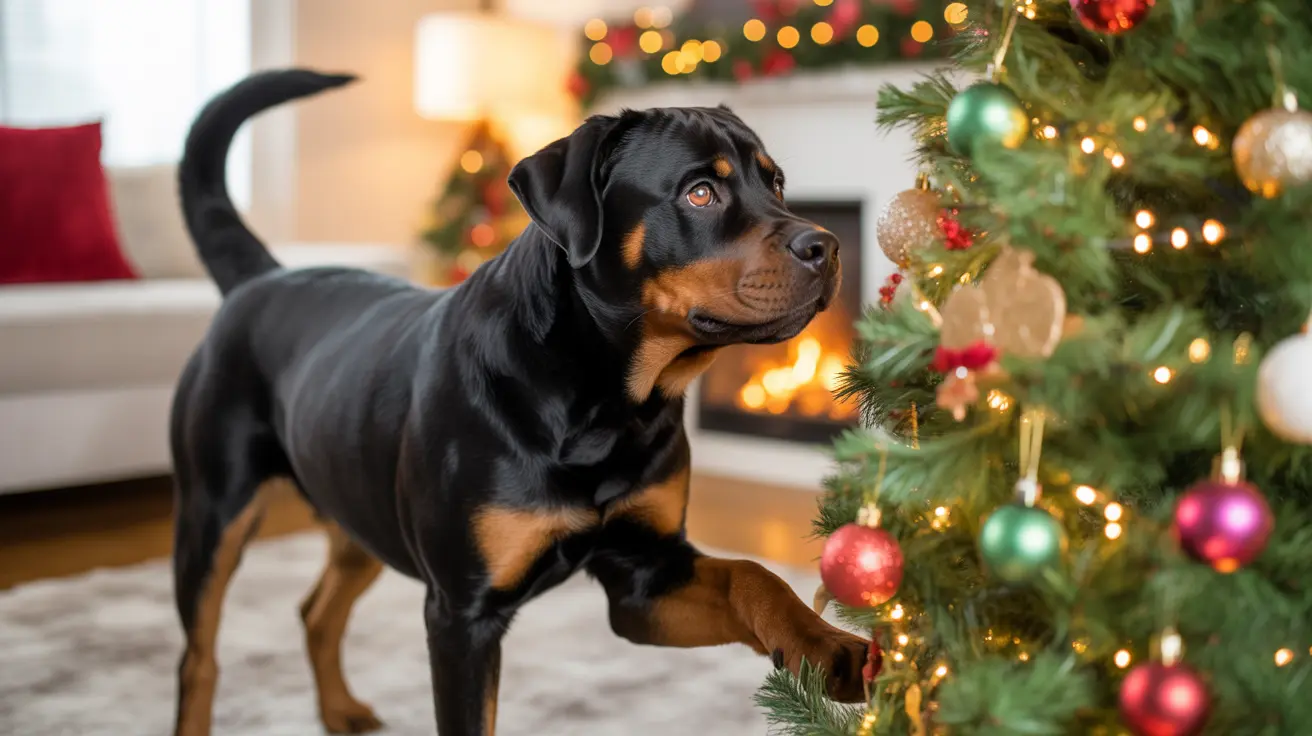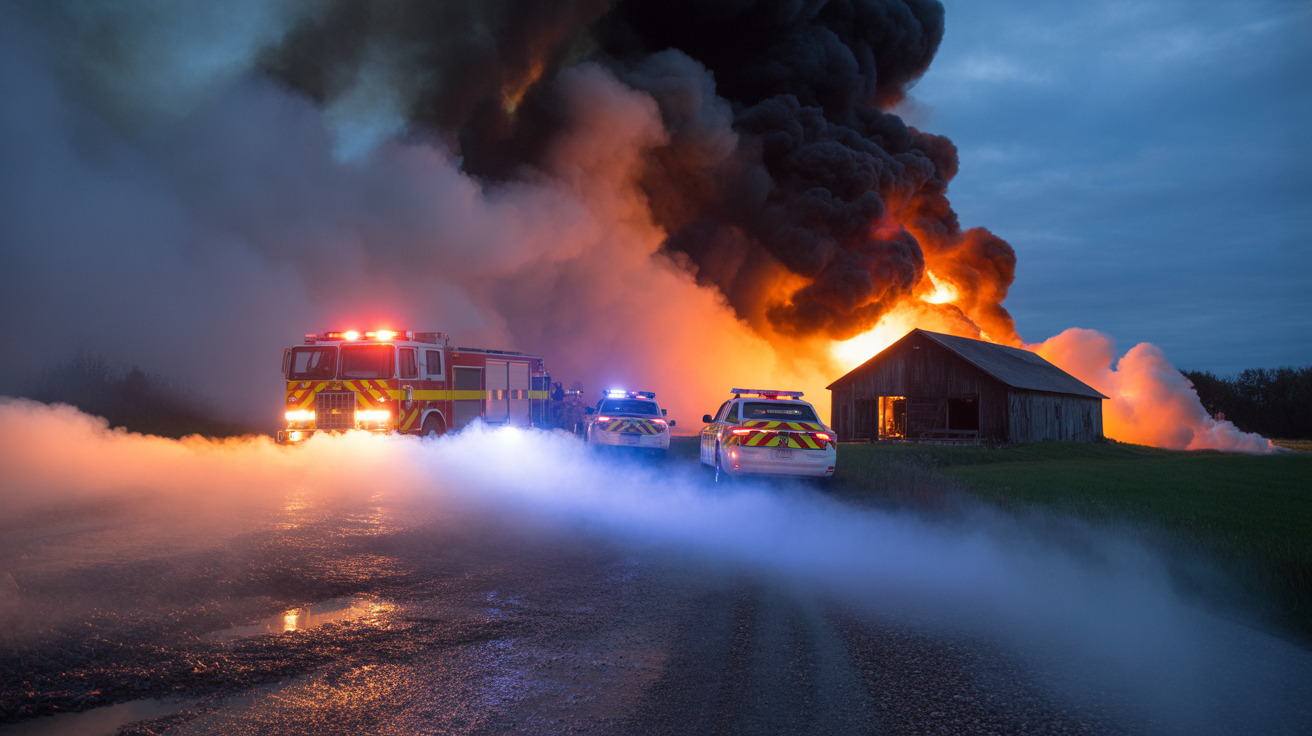Christmas Pet Safety Hazards: Complete Guide to Keeping Dogs and Cats Safe During the Holidays
Christmas brings joy, warmth, and togetherness to millions of households, but for pet owners, the holiday season also introduces numerous hidden dangers that can threaten their beloved dogs and cats. Statistics reveal that dogs are 75% more likely to require emergency veterinary treatment for food poisoning during December than any other month of the year, highlighting the critical importance of understanding Christmas pet safety hazards.
From toxic festive foods and dangerous decorations to poisonous plants and holiday leftovers, the Christmas season presents a minefield of potential risks for curious pets. Understanding these hazards and taking proactive steps to prevent exposure can mean the difference between a joyful holiday celebration and a devastating emergency room visit. This comprehensive guide will equip you with essential knowledge to identify, avoid, and manage the most common Christmas pet safety hazards, ensuring your furry family members stay healthy and happy throughout the festive season.
Whether you're hosting a large family gathering or enjoying a quiet Christmas at home, being prepared and informed about these risks will help you create a pet-safe environment while still maintaining the magic and tradition of the holiday season.
Toxic Christmas Foods That Endanger Dogs and Cats
The abundance of rich, festive foods during Christmas creates numerous opportunities for accidental pet poisoning. Many traditional holiday dishes contain ingredients that are harmless to humans but can be fatal to dogs and cats. Understanding which foods pose the greatest risks is essential for preventing emergency situations.
Chocolate: The Most Dangerous Holiday Treat
Chocolate tops the list of Christmas pet safety hazards, with cases of chocolate poisoning rising significantly during December. The danger lies in theobromine and caffeine, compounds that dogs and cats cannot metabolize effectively. Even small amounts can cause serious illness, while larger quantities can be fatal.
Symptoms of chocolate poisoning include vomiting, lethargy, refusal to eat, and constipation. If your pet ingests chocolate, contact your veterinarian immediately and provide specific information about the type and amount consumed. Dark chocolate and baking chocolate contain higher concentrations of theobromine, making them more dangerous than milk chocolate. Remember that chocolate packaging can also pose risks, as wrappers may cause dangerous intestinal blockages if ingested.
Christmas Baked Goods and Dried Fruits
Traditional Christmas treats like mince pies, Christmas cake, and Christmas pudding contain dried grapes in the form of raisins, currants, and sultanas, which are highly toxic to both dogs and cats. These ingredients can cause kidney failure, and even small amounts can be harmful to pets of any size.
The danger with dried grape toxicity is that symptoms can be delayed, making it crucial to seek veterinary help immediately upon suspected ingestion, even if your pet appears normal initially. Never wait for symptoms to appear, as early intervention significantly improves treatment outcomes.
Nuts and Their Hidden Dangers
While not all nuts are toxic to pets, several varieties commonly found in Christmas treats pose serious health risks. Macadamia nuts are particularly dangerous, capable of causing weakness in back limbs, lethargy, tremors, pain, vomiting, and increased body temperature within 12 hours of ingestion. These symptoms can persist for several days and require veterinary intervention.
Other nuts may not be directly toxic but can cause choking hazards or intestinal blockages, especially in smaller pets. Additionally, nuts are often salted or seasoned, adding another layer of risk through excessive sodium intake.
Dangerous Holiday Decorations and Their Risks
Christmas decorations transform homes into festive wonderlands, but many popular holiday items can pose serious threats to curious pets. Understanding these decoration-related Christmas pet safety hazards helps create a beautiful yet secure environment for your furry family members.
Tinsel and Ornament Hazards
Tinsel, also known as lametta, presents multiple dangers to pets. Traditional tinsel may contain lead, which can cause poisoning if ingested. More commonly, tinsel creates a serious risk of intestinal blockage when swallowed, as the metallic strands can twist and bind in the digestive system, potentially requiring emergency surgery to remove.
Glass ornaments and decorative figures pose dual threats through both toxic materials and physical injury. Many ornaments contain lead-based paints or materials that can cause poisoning. Additionally, broken glass from dropped or knocked-over decorations can cause severe cuts to paws, mouths, or internal injuries if swallowed.
Christmas Tree Safety Concerns
Real Christmas trees, while generally not highly toxic, can cause mild stomach upset if pine needles are ingested by pets. The sharp pine needles also present a physical hazard, potentially injuring sensitive paw pads or causing internal damage if swallowed in large quantities.
Tree stability becomes crucial when pets are present, as curious cats may climb trees or dogs may investigate underneath, potentially causing the entire structure to topple. This creates risks of injury from falling branches, ornaments, or the tree itself.
Electrical Decorations and Fire Hazards
Fairy lights and electrical decorations introduce electrocution risks, especially for pets who may chew on cords. Always supervise pets around electrical decorations and consider using cord protectors or pet-safe barriers to prevent access.
Open flames from candles on Advent wreaths create fire hazards when pets are present. Cats may jump near candles, or dogs may knock over displays with their tails. Artificial candles or battery-operated alternatives provide safer options while maintaining the festive atmosphere.
Toxic Holiday Plants: Beautiful but Dangerous
Many traditional Christmas plants contain compounds that are harmful or fatal to dogs and cats. These natural decorations often become irresistible to curious pets, making plant-related toxicity a significant concern during the holiday season.
Poinsettias and Their Misconceptions
While poinsettias (Christmas stars) are often considered the most dangerous Christmas plant, they are actually mildly toxic compared to other holiday flora. However, ingestion can still cause mouth and stomach irritation, vomiting, and diarrhea in sensitive pets. The milky sap from broken stems or leaves can also cause skin irritation.
Highly Toxic Holiday Plants
Mistletoe presents a much more serious threat than poinsettias, containing compounds that can cause severe cardiovascular problems, difficulty breathing, and even death in pets. All parts of the mistletoe plant are toxic, with berries containing the highest concentration of dangerous substances.
Holly and ivy, popular in Christmas wreaths and decorations, contain saponins and other toxic compounds that cause vomiting, diarrhea, drowsiness, and potential heart problems. The spiky leaves also present physical injury risks to curious pets.
Pine Branch Water Hazards
An often-overlooked Christmas pet safety hazard involves the water used to keep cut pine branches fresh. This water can become toxic as it absorbs compounds from the pine, creating a poisonous drink that may attract thirsty cats. Always cover or remove access to any water containers holding Christmas greenery.
Holiday Food Leftovers and Kitchen Dangers
The abundance of rich holiday foods creates numerous opportunities for pets to encounter dangerous substances, whether through intentional feeding or accidental ingestion. Understanding which common holiday leftovers pose the greatest risks helps prevent serious poisoning incidents.
Dangerous Meat Preparations
Cooked bones from turkey, chicken, goose, or duck become brittle during the cooking process and can splinter when chewed, causing obstructions or internal injuries that may require surgical intervention. Unlike raw bones, which are generally safer, cooked bones should never be given to pets under any circumstances.
Fatty meats like goose or duck, while traditional holiday fare, can trigger pancreatitis in dogs and cats. This painful condition causes severe abdominal pain, vomiting, and can become life-threatening without proper treatment. Even small amounts of extremely fatty foods can trigger episodes in susceptible pets.
Seasoning and Preparation Hazards
Sage and onion stuffing contains alliums (onions, garlic, shallots), which damage red blood cells in dogs and cats, potentially causing anemia. Symptoms include vomiting, diarrhea, abdominal pain, weakness, lethargy, rapid breathing, and loss of appetite. Contact your veterinarian immediately if your pet ingests any amount of these foods.
Heavy seasonings, salt, and butter commonly used in holiday meal preparation make otherwise safe foods dangerous for pets. Mashed potatoes prepared with butter and cream, or vegetables seasoned with garlic and herbs, become inappropriate for pet consumption despite their appealing aroma.
Hidden Sweetener Dangers
Sugar-free holiday treats and baked goods may contain xylitol, a sweetener that is highly poisonous to dogs and cats. Xylitol causes rapid insulin release, leading to severe hypoglycemia (low blood sugar), which can result in loss of coordination, weakness, collapse, and seizures within minutes of ingestion.
Raw dough containing yeast presents dual dangers: the yeast continues to ferment in the warm, moist environment of a pet's stomach, producing alcohol and causing the dough to expand, potentially creating dangerous bloat or alcohol poisoning.
Recognizing Signs of Poisoning and Emergency Response
Quick recognition of poisoning symptoms and appropriate emergency response can save your pet's life during a Christmas-related toxicity incident. Understanding what to look for and how to respond provides crucial advantages in emergency situations.
Common Poisoning Symptoms
The most frequent signs of poisoning in pets include nausea, vomiting, lethargy, and diarrhea. However, symptoms can vary significantly depending on the substance ingested and the individual pet's sensitivity. Other warning signs include loss of appetite, excessive drooling, difficulty breathing, tremors, seizures, loss of coordination, and changes in heart rate.
Some toxins cause delayed reactions, making it essential to monitor pets closely for 24-48 hours after suspected ingestion, even if they initially appear normal. Chocolate, grape products, and certain plant toxins may not produce immediate symptoms but can cause serious damage over time.
Immediate Response Protocols
If you suspect your pet has ingested any toxic substance, contact your veterinarian immediately and provide specific information about what was consumed, how much, and when the ingestion occurred. Time is critical in poisoning cases, and early intervention significantly improves treatment outcomes.
Never induce vomiting without professional veterinary advice, as some substances can cause additional damage when brought back up. While activated charcoal tablets can sometimes help absorb toxins in the digestive system, they should only be administered under veterinary guidance and do not replace professional medical treatment.
Keep your veterinarian's emergency contact information readily available during the holidays, along with the contact information for the nearest emergency veterinary clinic and pet poison control hotline.
Creating Pet-Safe Holiday Celebrations
Maintaining holiday traditions while ensuring pet safety requires thoughtful planning and creative alternatives. With proper preparation, you can create memorable celebrations that include your furry family members without compromising their health and safety.
Safe Holiday Treats for Pets
Instead of sharing dangerous human foods, prepare special pet-friendly treats using safe ingredients. Plain, cooked turkey or chicken without skin, bones, or seasoning provides a special holiday meal for pets. Unseasoned scrambled eggs, cooked pumpkin, green beans, sweet potatoes, and Brussels sprouts can be offered in small amounts as festive treats.
Fresh apple slices with seeds and cores removed provide a crunchy, healthy snack that many pets enjoy. Always introduce new foods gradually and in small quantities to prevent digestive upset, even with safe ingredients.
Holiday Environment Management
Create a quiet, safe space where pets can retreat from holiday commotion and festivities. This designated area should be free from decorations, toxic plants, and food hazards, providing a secure environment when household activity becomes overwhelming.
Secure trash bins with tight-fitting lids to prevent access to food scraps and dangerous materials. Inform guests about your pet-feeding rules and ask them not to share human food with your animals. Consider using baby gates or barriers to limit pet access to areas with the highest concentration of hazards, such as dining rooms during meal preparation and consumption.
Ensure your pet's identification tags and microchip information are current, as the increased activity and frequent door openings during holiday gatherings create higher risks of pets escaping or becoming lost.
Frequently Asked Questions
What should I do if my pet eats chocolate during Christmas?
Contact your veterinarian immediately and provide specific information about the type of chocolate consumed, the amount ingested, and your pet's weight. Do not induce vomiting without professional advice. Dark chocolate and baking chocolate are more dangerous than milk chocolate due to higher theobromine concentrations. Time is critical, so seek help even if your pet appears normal initially.
Are poinsettias really dangerous to pets?
Poinsettias are mildly toxic to pets, causing mouth and stomach irritation, vomiting, and diarrhea, but they are not as dangerous as commonly believed. However, other Christmas plants like mistletoe, holly, and ivy pose much more serious threats and can cause severe poisoning or death. Keep all holiday plants out of pet reach to be safe.
Can I give my dog turkey bones from Christmas dinner?
Never give cooked turkey bones to dogs or cats. Cooked bones become brittle and can splinter, causing intestinal blockages or internal injuries that may require emergency surgery. Instead, offer small amounts of plain, cooked turkey meat without skin, bones, or seasoning as a safe holiday treat.
What Christmas decorations are most dangerous to pets?
Tinsel poses the highest risk due to potential lead content and serious intestinal blockage hazards if ingested. Glass ornaments can break and cause cuts or internal injuries, while electrical cords from lights create electrocution risks. Keep these decorations out of pet reach and supervise pets around decorated areas.
How can I tell if my pet has been poisoned during the holidays?
Common signs include vomiting, diarrhea, lethargy, loss of appetite, excessive drooling, difficulty breathing, tremors, or loss of coordination. Some toxins cause delayed reactions, so monitor your pet closely for 24-48 hours after suspected ingestion. Contact your veterinarian immediately if you notice any unusual symptoms or suspect toxin exposure.
What safe foods can I share with my pet during Christmas?
Safe options include plain, cooked turkey or chicken without bones, skin, or seasoning, unseasoned scrambled eggs, cooked pumpkin, green beans, sweet potatoes, Brussels sprouts, and fresh apple slices with seeds removed. Always offer these in small amounts and introduce new foods gradually to prevent digestive upset.
Should I be concerned about Christmas tree water?
Yes, especially if you have cats. Water used to keep cut pine branches or Christmas trees fresh can become toxic as it absorbs compounds from the pine. This contaminated water may attract thirsty pets, particularly cats, and can cause poisoning if consumed. Cover or remove access to all tree water containers.
Conclusion
Christmas pet safety hazards are numerous and varied, but with proper knowledge and preparation, you can create a festive environment that's both magical and secure for your beloved dogs and cats. From avoiding toxic foods like chocolate and dried grapes to managing dangerous decorations and plants, every precaution you take helps ensure your furry family members remain healthy throughout the holiday season.
Remember that prevention is always better than treatment when it comes to pet safety. By securing hazardous items, educating family and guests about pet-feeding rules, and having emergency veterinary contacts readily available, you're taking essential steps to protect your pets. The holiday season should be a time of joy and togetherness for all family members, including those with four legs and fur coats, and with proper planning, you can achieve exactly that while keeping everyone safe and sound.






